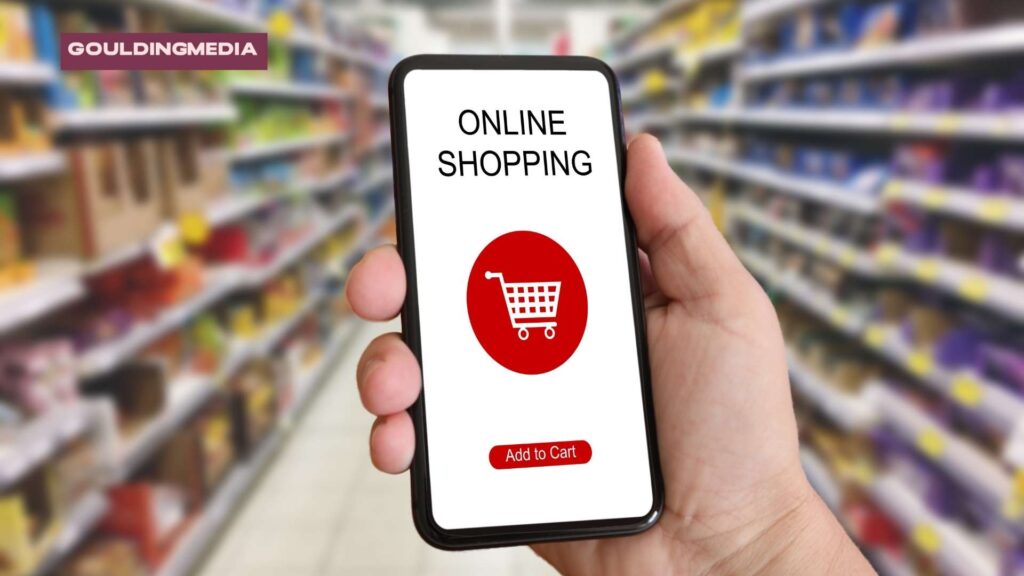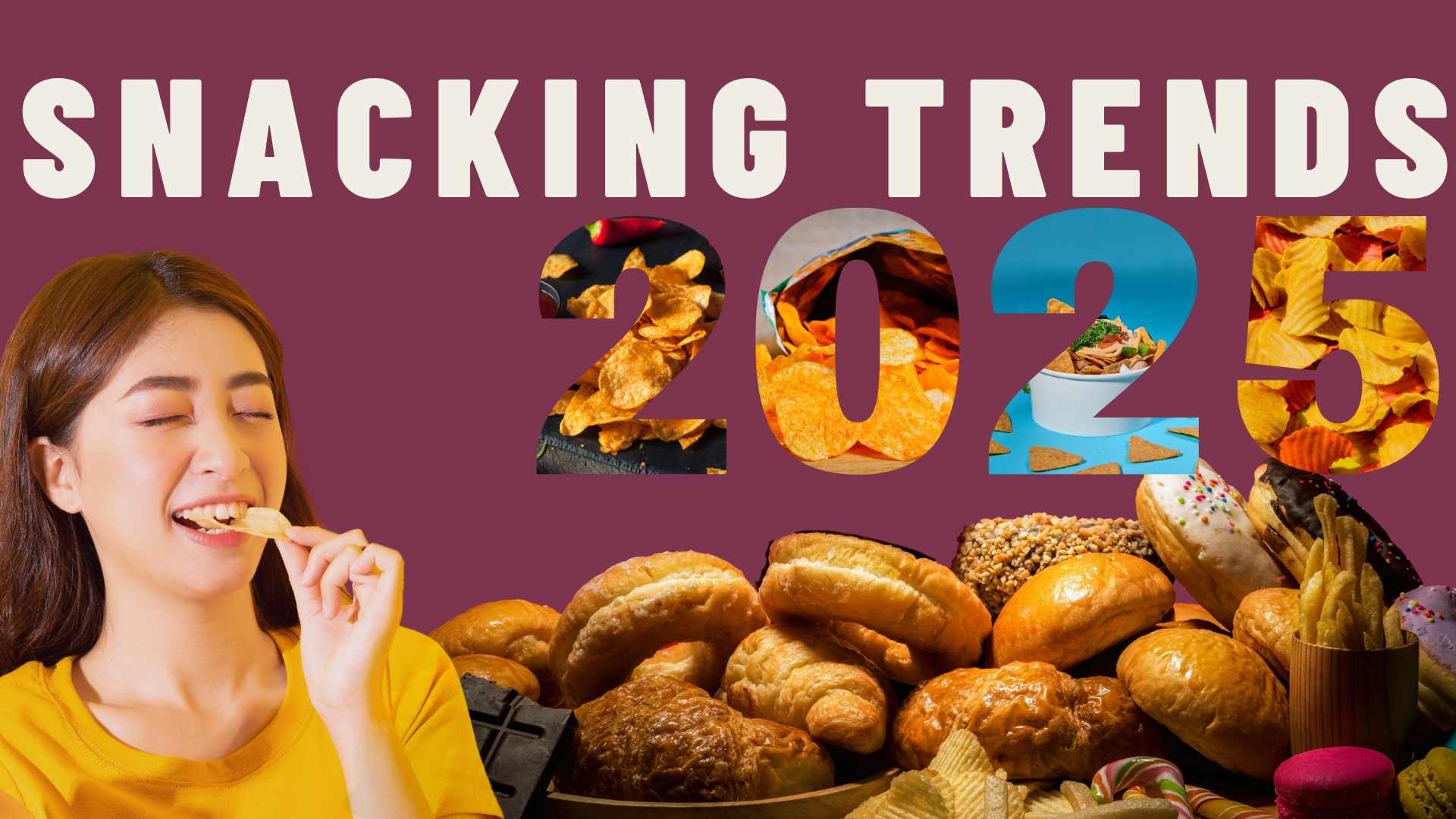Snacking has come a long way from being just a quick fix between meals. These days, it’s a big part of how people eat, relax, connect, and even express their values. Healthy snacking trends now include everything from protein-packed bars and mood-boosting treats to bold new flavours inspired by global cuisine. Snacks are becoming more personal, more purposeful, and way more interesting.
In this future snacking trends report, we explore what’s driving this shift—from UK snacking habits to the growing demand for sustainable snacks, cultural flavours, and ethical sourcing. If you want to understand what today’s consumers are really craving, this is where it starts.
1. The Rise of Snackification
The idea of three square meals a day is starting to feel a bit outdated. More people are embracing a flexible approach to eating, where smaller bites throughout the day are the new norm. This snacking trend shift—often referred to as snackification—is being driven by busy schedules, longer working hours, and the simple reality of being constantly on the move.
Many consumers now say they decide what to eat in the moment rather than planning ahead. In fact, 67% globally admit they figure out meals as they go, which explains why convenient and satisfying snacks are having a bit of a moment.
Snacks aren’t just seen as fillers anymore. Products like breakfast bars, protein-rich snacks, and mini ready-to-eat meals are being used to replace traditional sit-down meals. For younger consumers, snackification also ties into convenience. Portable formats, such as on-the-go snacks UK shoppers love, are now essential in meeting busy lifestyles.
2. Emotional Snacking: Mood, Comfort, and Connection
Snacking isn’t just about hunger anymore. It’s become something more emotional, often tied to how people feel in the moment. For many, particularly younger generations, snacks offer comfort, a bit of calm, or even a way to connect with others.
According to the 2024 State of Snacking report, 81% of global consumers say they snack to lift their mood, while 76% do it to relax or manage stress. These aren’t just habits—they’re little rituals of self-care.
Among Gen Z and Millennials, the emotional link is even stronger. Over half of them snack to reward or pamper themselves, and 58% say snacking helps them unwind or find ‘me time’ during the day. For them, mindful snacking UK is more than a habit—it’s a daily ritual.
There’s also a growing social side to snacking. About 64% of people say they snack to feel connected to others, and among Millennials, 82% believe sharing snacks is a way of showing affection, or as many put it, their “love language.”
3. Indulgence with Intention
Treating yourself doesn’t come with the guilt it used to. For a lot of people, indulgent snacking is part of emotional well-being, not something to feel bad about. It’s less about overdoing it and more about enjoying small moments with something that really hits the spot. For many, enjoying gourmet snacking or artisanal snacks is part of self-care.
The numbers show that 77% of consumers snack as a reward or treat, and most would rather have a smaller portion of something rich and satisfying than a bigger portion of a “lighter” alternative. This shows that indulgence has become more about quality than quantity.
Flavour remains essential. According to State of Snacking, a strong 83% of consumers across the UK, US, and Canada say taste is non-negotiable, even when choosing indulgent snacks. This is where innovative snack ideas, such as fusion flavours or premium small-batch products, win hearts. In places like the Philippines (88%) and Indonesia (86%), flavour takes even greater priority, showing that people everywhere want their snacks to deliver on enjoyment, regardless of the label.
4. Better-for-You Snacking is Going Mainstream

There was a time when snacking meant crisps, biscuits, or something overly sweet. But that’s changing fast. Consumers aren’t just looking for a sugar rush anymore—they want something that tastes good and does them some good, too.
Eating healthily doesn’t mean cutting out all the treats. In fact, most people now see balance as the key—it’s not about being overly strict, but about choosing snacks that feel better overall. Low-calorie snacks, gluten-free snacks, and vegan snack options are no longer niche—they’re mainstream. At the same time, organic snack foods are gaining traction as shoppers look for more natural, less processed options.
It’s already big business. According to Rachel Austerberry, the protein bar market in the UK is now worth over £150 million, having jumped 42% since 2022. Brands like Grenade and even Baileys Chocolate are catching onto this shift, bringing out bars that mix indulgence with added goodness, using things like nuts, fruit, or whole grains.
5. Cultural Curiosity: Global Tastes, Local Palates
Food is one of the best ways to explore new cultures. And right now, more people are turning to snacks to do exactly that.
We’re seeing this especially with younger generations, who are really up for trying something different. Whether it’s from travelling, scrolling through recipes on TikTok, or simply being curious, there’s a growing appetite for global flavours. In fact, around 40% of people worldwide—and half of Gen Z—say that cultural identity influences the food they choose.
This openness has given rise to fusion flavours and international snack hybrids. Think matcha biscuits, masala chickpeas, or chilli-lime popcorn—things that mix familiar formats with bold, global flavours. For a lot of people, it’s about experiencing something new without having to cook a whole meal.
So yeah, if you’ve noticed more adventurous snacks in the shops lately, that’s why. The world’s getting smaller—and tastier.
6. Eco-Ethical Expectations
These days, it’s not just about what’s in your snack—it’s about how it’s made, who made it, and whether it’s doing any good. More and more of us are paying attention to the story behind the products we pick up.
And especially for younger consumers, this stuff really matters. According to State of Snacking, around 66% of under-35s say buying from sustainable or ethical brands is a way of expressing their values. So, things like recyclable packaging, fair trade sourcing, and transparency about ingredients are no longer just “nice-to-haves.”
Big brands are picking up on this, too. Take KitKat, for example—they’re now using cocoa sourced through a programme that supports over 30,000 farming families with sustainable farming, education, and extra income streams.
It just shows that the way a snack is made is becoming just as important as how it tastes. And honestly, that’s probably a good thing.
7. Seasonal & Experiential Selling
Timing really does matter when it comes to snacks. We’re all more likely to treat ourselves around certain times of the year—Christmas, Easter, Eid, Valentine’s, you name it. And brands have definitely noticed.
Take Easter, for example. Around 70% of shoppers say they plan to buy Easter-themed confectionery, and interestingly, almost half of those purchases happen in just the week before. It’s not just about chocolate eggs—it’s about the feeling of celebration, the tradition, the moment.
But it’s not only about the season. People are looking for something a bit more special—something they can experience. That’s why things like sharing bags, limited-edition flavours, themed gift boxes, and even DIY snack kits are getting more popular.
Let’s not forget nostalgia. There’s been a real comeback for classic flavours and vintage packaging. Especially in uncertain times, there’s something comforting about snacks that remind you of simpler days. Behavioral science studies show that consumers are less likely to be price sensitive to products which bring back memories.
So, if it feels like snacks are becoming part of how we celebrate, share, or just enjoy a moment, that’s exactly what’s happening.
8. Digital Influence & Social Commerce

One of the most noticeable snacking trends is that snack choices are increasingly being shaped online. From viral TikTok trends to influencer recommendations, social media is becoming one of the most powerful spaces for discovering what to eat next.
This is especially true for younger consumers. Research from State of Snacking shows that 47% of Gen Z turn to social platforms for snack inspiration, compared to just 31% of the wider population. Roughly 69% of Gen Z make an online purchase at least once a month, which shows just how much influence digital spaces now hold.
To stand out in this environment, brands are making sure their products look the part online. Features like bright, bold packaging, unboxing videos, and authentic storytelling are helping to drive visibility and trust.
Scrolling through snacks has become a regular part of the shopping journey—whether it’s a product review, a funny reel, or a snack haul video. Consumers are looking for something that feels genuine, eye-catching, and worth a try.
Wrapping Up
The snacking landscape is changing fast, driven by shifting lifestyles, emotional needs, and a growing appetite for variety, health, and meaning. For brands, this isn’t just a trend—it’s a chance to innovate, connect, and lead. Those who understand where snacking is headed will be best positioned to create products that resonate and sell.
At Goulding Media, we work with forward-thinking brands to turn trends into powerful packaging, messaging, and market presence. Let’s talk about how we can help your brand tap into the future of snacking trends and stand out where it matters most.



